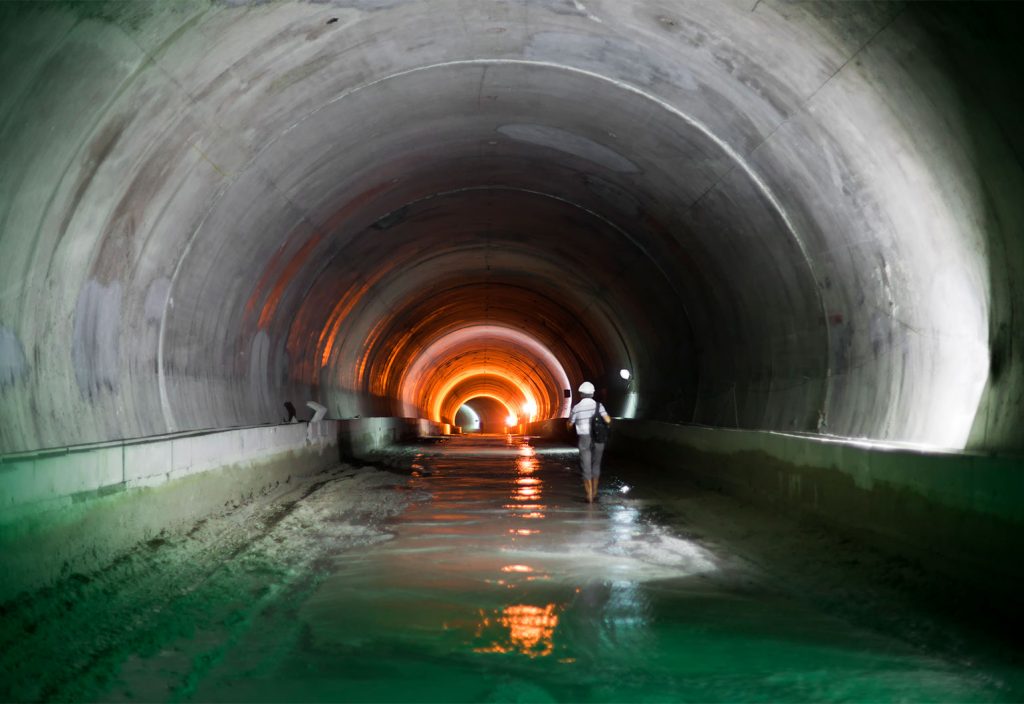To celebrate World Tunnelling Day (4 December), create takes a look at this fast-growing and vitally important sector.
President of the Australian Tunnelling Society, Engineers Australia member and Design Director at Aurecon chartered engineer Dr Harry Asche, believes tunnelling in Australia is booming.
“Australia is seeing approximately one per cent population growth per year through immigration, and our population is expected to reach 40 million in 2050,” he told create.
“All of our cities, particularly Perth, Sydney, Melbourne and Brisbane, are expected to grow significantly. Tunnels in these cities are being used to improve our transport, water and wastewater infrastructure, and even to improve power supply networks.”
Major Australian tunnelling projects currently underway include the Forrestfield-Airport Link in Perth, Adelaide’s North-South Corridor, the Cross River Rail in Brisbane, and mega projects in metro rail and road in Sydney and Melbourne.
Changing times
“It’s a very exciting time for tunnelling in Australia at the moment,” Asche said.
“Until the 1990s, the industry was small. But increased density in our cities and the need to preserve public space opened opportunities for freeway routes to be converted to tunnels.”
He noted that changing public attitudes to tunnelling projects and acceptance of environmental factors has also played a part in their increased prevalence in Australia. So too have a number of technical advances in recent years.
“When I started tunnelling, a tunnel boring machine was a fairly unreliable piece of equipment,” Asche said.
“Engineers considered them unreliable, and they spent a lot of time broken down. Now, they’ve almost improved yearly. They still need a lot of maintenance, but spend far less time out of service.”
In addition to enhanced reliability, tunnel boring machines have made strides forward in terms of energy efficiency.
“The evolution is now tuning the behaviour of the machine so that it conserves energy in all of the facets of its operation,” Asche said.
“That’s a sign of the maturity of the technology since the first closed-face machines began operating in the 1960s.”
Another significant advance in tunnelling has come about thanks to computer modelling and automation.
“We’ve gone from requiring academic help to analyse something with advanced numerical calculations, to it being routine and to some extent automated,” Asche said.
“When I started tunnelling, the programs we used were fairly buggy and difficult to navigate. Now, the commercial software is extremely reliable and efficient.”
Career satisfaction
Asche said one thing about the tunnelling industry hasn’t changed, however, and that’s what makes it such a valuable career — the level of uncertainty engineers have to overcome on each project.
“Every process goes through a series of discoveries where we might do a desktop study, followed by geotechnical testing and boreholes,” he said. “It’s all about reducing uncertainty, but [having said that] tunnelling retains an element of risk and uncertainty all the way through to construction.”
For Asche, the attraction of engineering is the problem solving and challenges that professionals must overcome every day. And he believes that seeking out challenges is a good way to look at not only your career, but your life.
“First of all, you’re always learning — there’s always something new that you need to know. Secondly, the element of uncertainty means you’re always facing risks and trying to overcome them by various means and methods,” he said.
“Finding a way of balancing the risk and finding a sustainable and inexpensive way of dealing with that risk is why tunnelling is so exciting, and why the people who do it are so engaged with what they do.”
Find out more about the Australian Tunnelling Society here.
